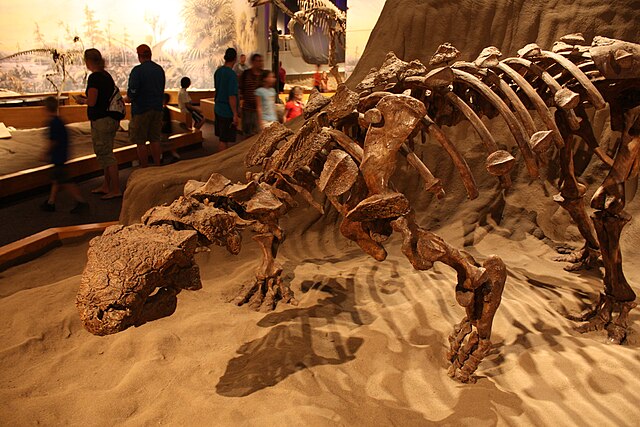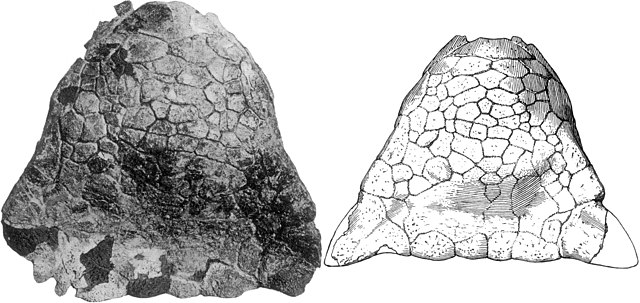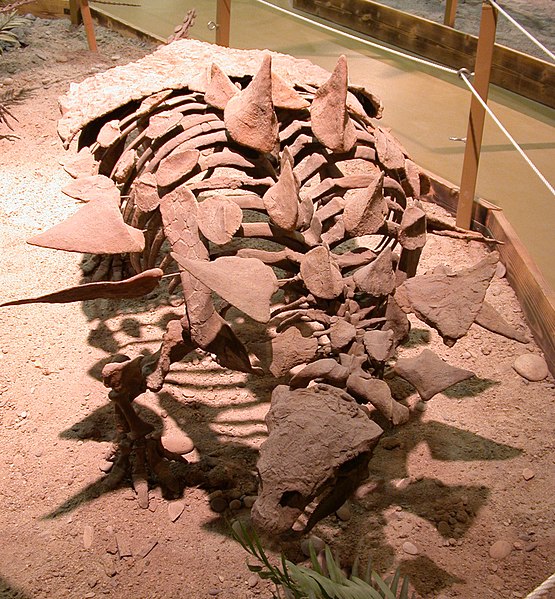Talarurus is a genus of ankylosaurid dinosaur that lived in Asia during the Late Cretaceous period, about 96 million to 89 million years ago. The first remains of Talarurus were discovered in 1948 and later described by the Russian paleontologist Evgeny Maleev with the type species T. plicatospineus. It is known from multiple yet sparse specimens, making it one of the most well known ankylosaurines, along with Pinacosaurus. Elements from the specimens consists of various bones from the body; five skulls have been discovered and assigned to the genus, although the first two were very fragmented.
Talarurus
Complete view of the mounted skeleton at MUSE - Science Museum in Trento, featuring unusual traits.
Life restoration of a Talarurus being preyed by an Achillobator pack.
Ankylosauridae is a family of armored dinosaurs within Ankylosauria, and is the sister group to Nodosauridae. The oldest known Ankylosaurids date to around 122 million years ago and went extinct 66 million years ago during the Cretaceous–Paleogene extinction event. These animals were mainly herbivorous and were obligate quadrupeds, with leaf-shaped teeth and robust, scute-covered bodies. Ankylosaurids possess a distinctly domed and short snout, wedge-shaped osteoderms on their skull, scutes along their torso, and a tail club.
Ankylosauridae
Skull of first known ankylosaurid specimen, belonging to Ankylosaurus
Club of indeterminate ankylosaurine, CMN 349
Gastonia and other polacanthine dinosaurs have uncertain placement, possibly within Ankylosauridae







